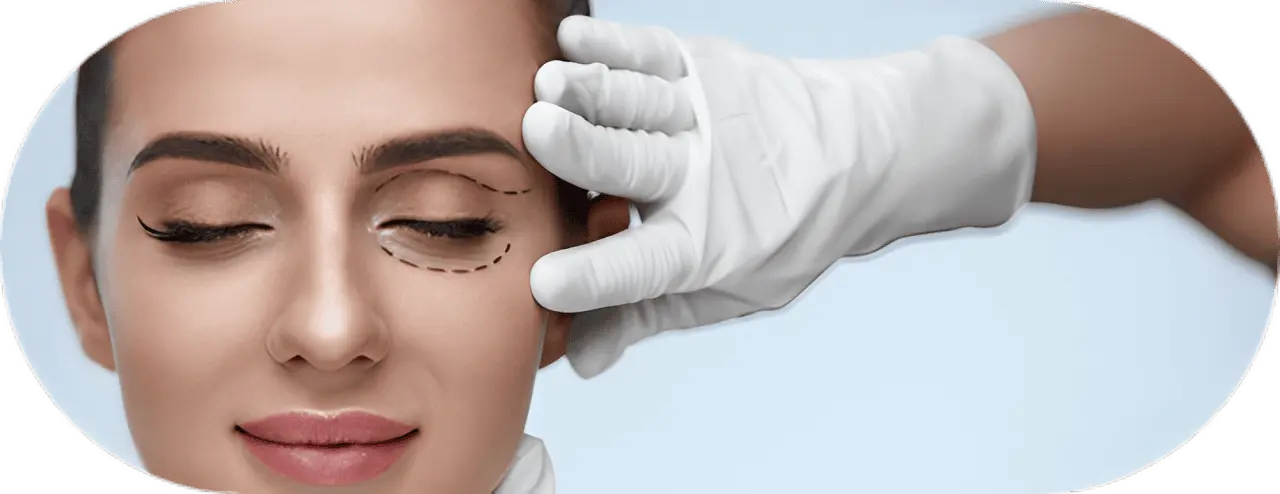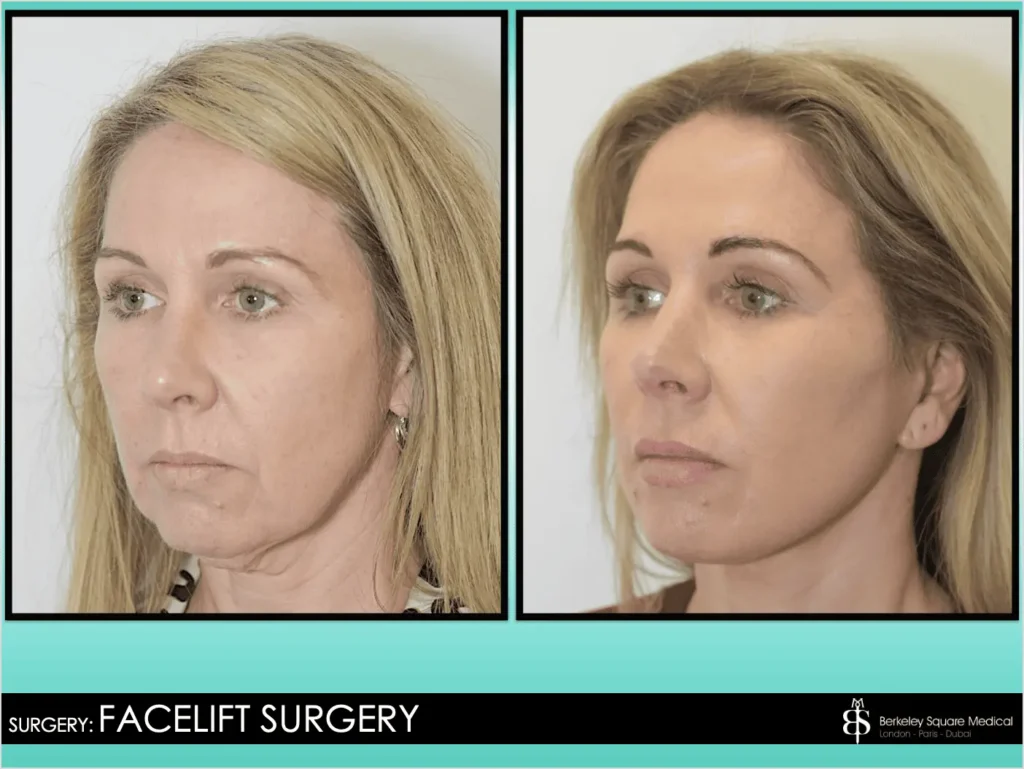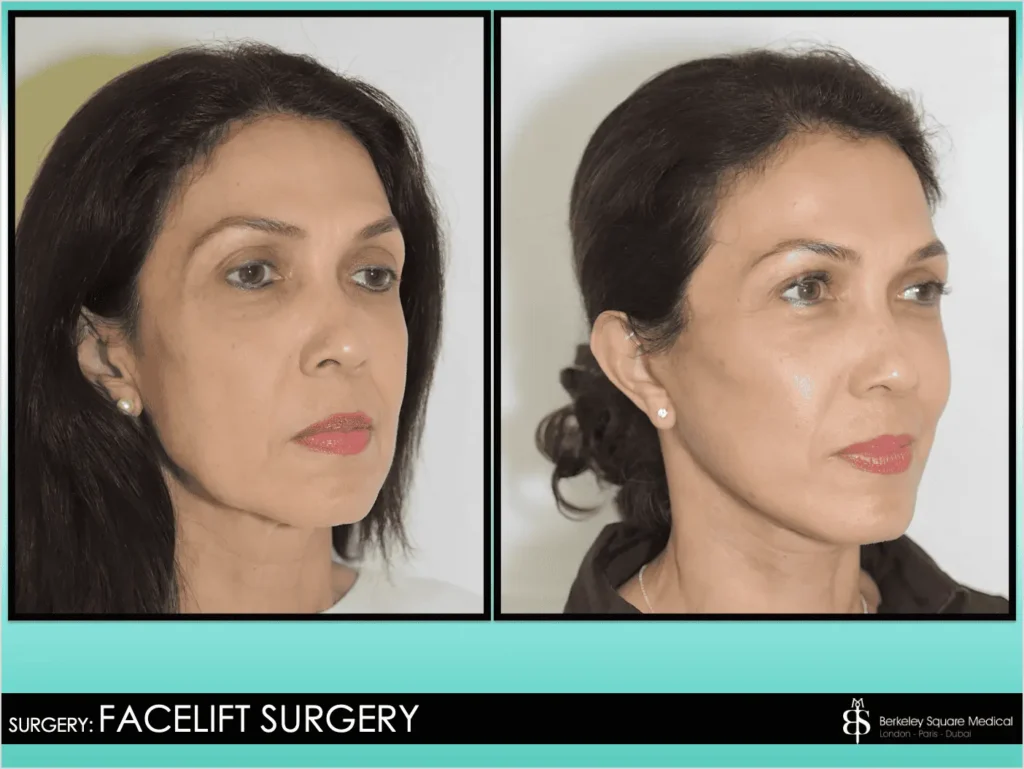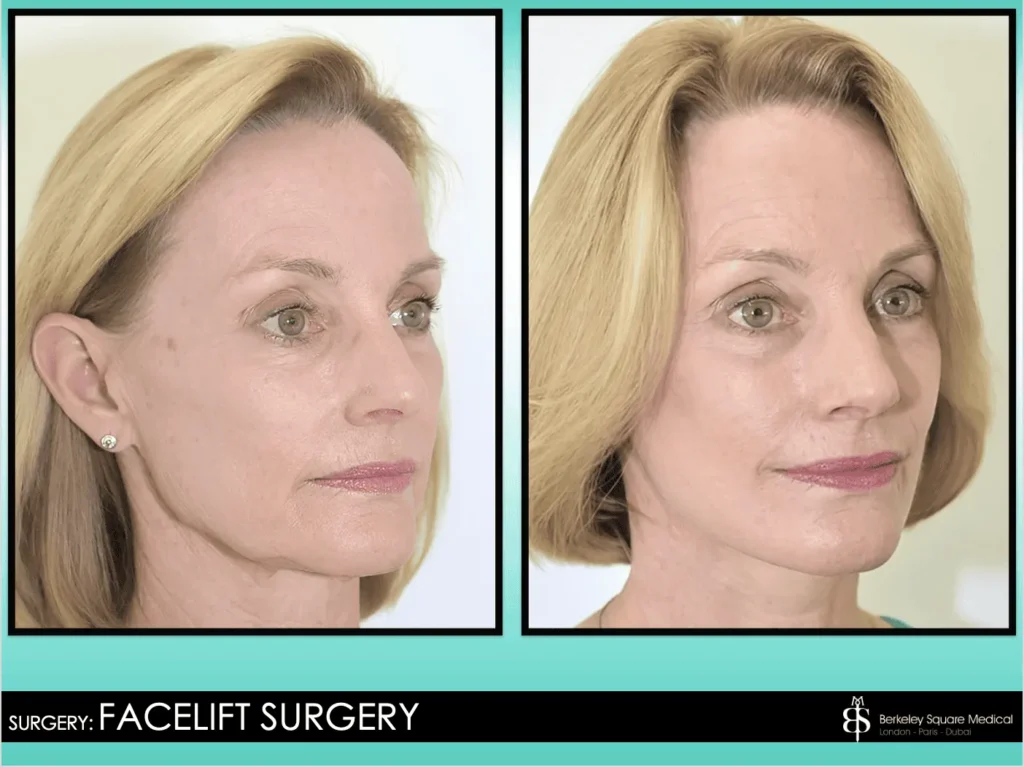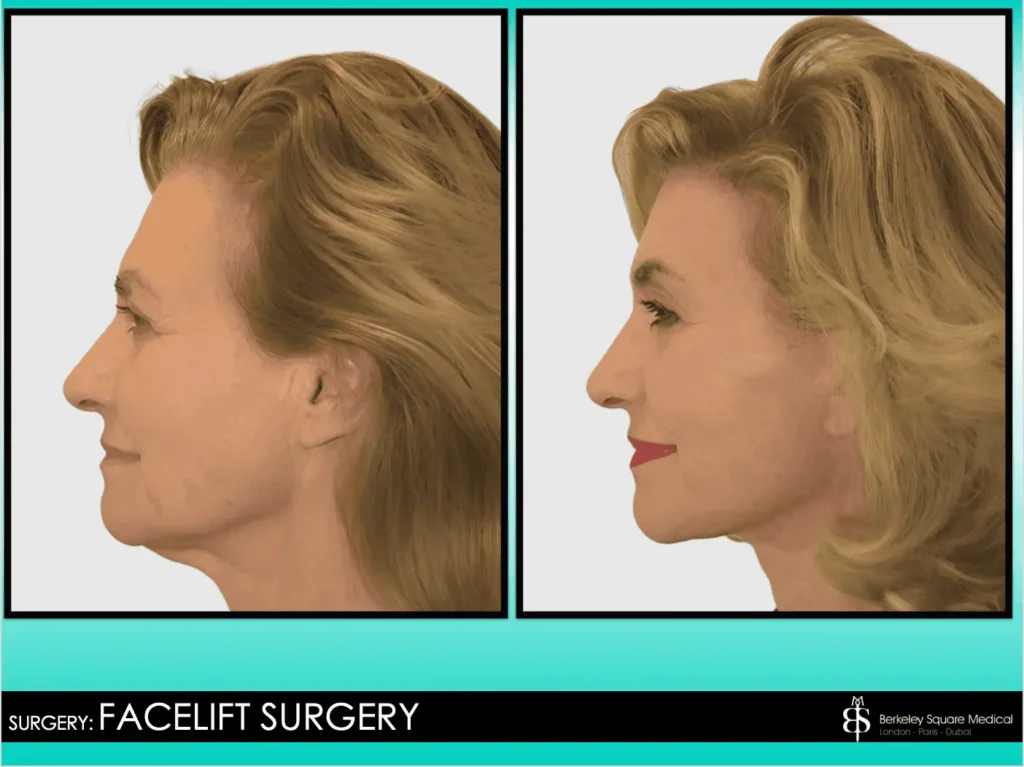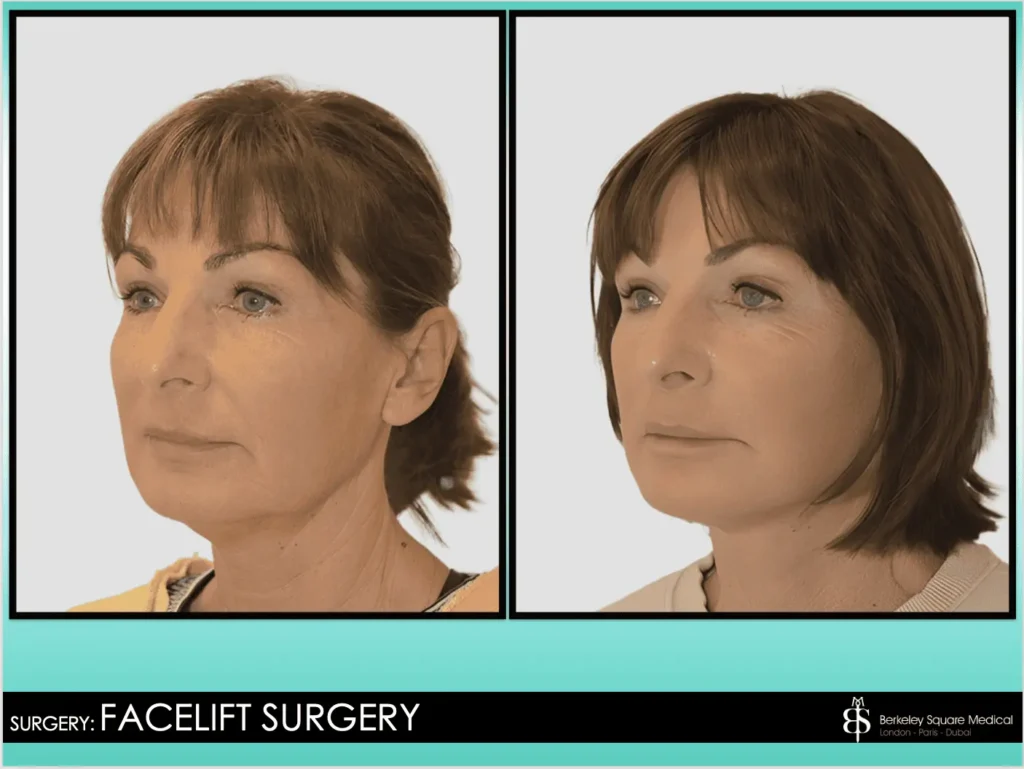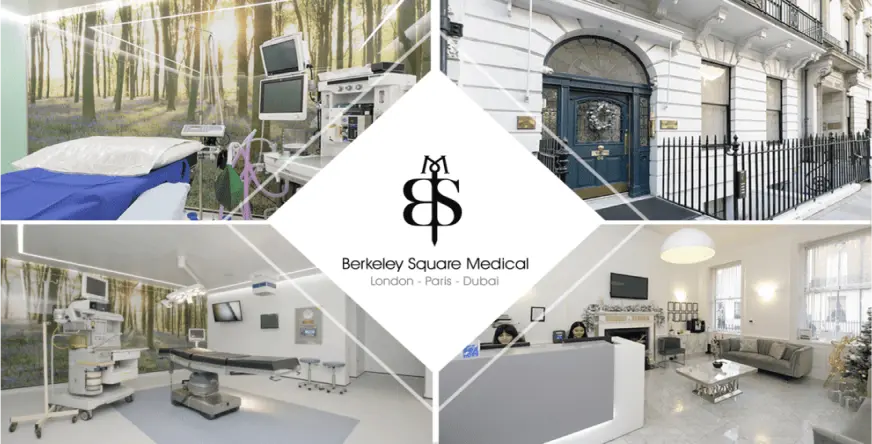Different Types Of Facelifts:
Full Facelift
A full facelift, or traditional facelift, is a comprehensive cosmetic surgery procedure designed to address moderate to severe signs of aging across the face and neck.
It involves larger incisions typically made around the hairline, extending down to the temples and behind the ears. Through these incisions, excess skin is removed, underlying tissues are tightened, and facial muscles may be repositioned for enhanced contours. This surgery aims to correct sagging skin, deep folds, and jowls, providing significant rejuvenation. While offering more dramatic results, a full facelift entails longer recovery time and may involve more discomfort compared to less invasive procedures.
Mini Facelift
A mini facelift is a less invasive cosmetic surgery aimed at rejuvenating the lower face and neck. Using smaller incisions hidden around the ears or hairline, it targets mild to moderate signs of aging, such as sagging skin and jowls.
Unlike a traditional facelift, it involves minimal tissue manipulation and shorter recovery time. This procedure focuses on lifting and tightening facial tissues, restoring youthful contours with reduced scarring and downtime. While effective for certain patients seeking subtle improvements, it may not address advanced aging concerns, necessitating consultation with a qualified plastic surgeon for personalised recommendations.
Deep Plane Facelift
A deep plane facelift is an advanced surgical technique that targets deeper layers of facial tissues for comprehensive rejuvenation. Unlike traditional facelifts, which primarily address superficial layers, a deep plane facelift repositions the underlying muscles and fat pads to restore volume and lift.
This approach offers more natural and long-lasting results by addressing midface sagging, nasolabial folds, and jowls with minimal tension on the skin. While it requires greater surgical skill and may involve a longer recovery period, a deep plane facelift provides significant and durable improvements in facial contours, yielding a more youthful and refreshed appearance.
SMAS Facelift
A SMAS facelift, or superficial musculoaponeurotic system facelift, targets the underlying facial structure known as the SMAS layer. This technique involves lifting and tightening the SMAS layer, which includes muscles and connective tissues, to address signs of aging such as sagging skin, jowls, and deep folds.
By repositioning and securing this deeper tissue layer, a SMAS facelift provides more comprehensive and longer-lasting results compared to traditional facelifts. This approach minimizes tension on the skin, resulting in a smoother, more natural-looking outcome with reduced risk of distortion. It's an effective option for individuals seeking significant facial rejuvenation with lasting benefits.
Why undergo a
Facelift
The Top 5 Reasons Why Our Patients Consider Facelift Surgery:
- Rejuvenate appearance: Facelift surgery effectively reduces visible signs of aging, including sagging skin, wrinkles, and jowls, restoring a more youthful and refreshed look.
- Boost self-confidence: By addressing facial aging concerns, facelift surgery can enhance self-esteem and confidence, allowing individuals to feel more comfortable and satisfied with their appearance.
- Long-lasting results: Unlike temporary solutions like fillers or topical treatments, facelift surgery provides enduring improvements, offering lasting benefits that can withstand the effects of time.
- Personalized approach: Facelift procedures can be tailored to individual needs and goals, ensuring that the treatment addresses specific concerns and achieves desired outcomes.
- Overall well-being: Improving facial aesthetics through facelift surgery can positively impact mental and emotional well-being, leading to a more positive outlook on life and increased satisfaction with one's appearance.


